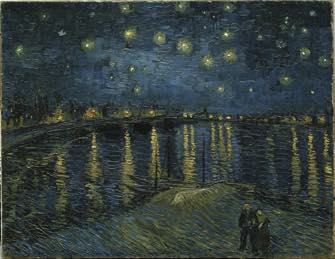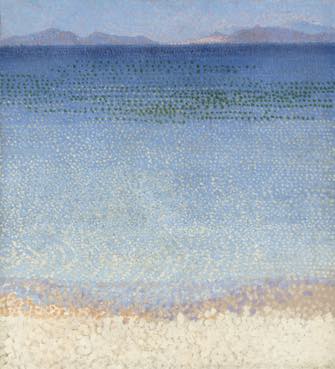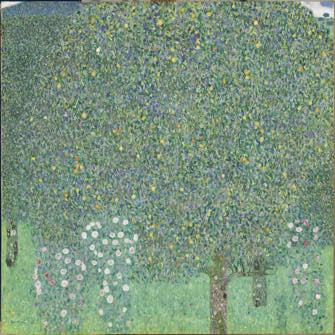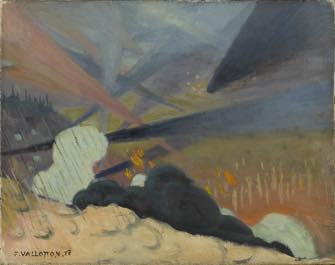
Question: What do Monet, Mondrian and Munch, O’Keeffe and Kandinsky have in common? The Musée d’Orsay’s show “Au Delà des Étoiles” (“Beyond the Stars”) has some answers. Subtitled “The Mystical Landscape from Monet to Kandinsky,” it connects these and many other painters from the mid-19th to the mid-20th centuries in an existential search for spiritual and metaphysical meaning in nature.
A standard trick of the curatorial trade is to build a blockbuster show by stringing a slew of minor works around a core of well-loved classics, all held together by interpretational yarn. It doesn’t always work. The masterpieces can be stifled in padding, and the journeymen artists humiliated by comparison. It can feel manipulative, too, when lesser works seem to be there for extrinsic reasons. Last year’s Rousseau exhibition at Orsay, for example, included paintings by artists such as Carlo Cenna and Carlo Carrà, who seemed to owe their presence mainly to the show’s origin as a Franco-Italian coproduction.
But when it works, it’s an eye-opener, bringing fresh context to well-known works and exposure to more obscure artists who ought to be known better.
“Au Delà des Étoiles” may not be perfect, but it works. The narrative thread traces a shared cosmological search through landscape,

nature and, by extension, abstract paintings by artists living in a time of great cultural disruption. Impressionists, Expressionists, Symbolists, Fauves, Nabis, abstractionists: all are presented as part of the search.
At first view, the linkage seems loose in some places, a stretch in others, but the closer you look, the better it fits. One of the more fascinating revelations is the extent to which esoteric spiritualism – Rosicrucianism and Helena Blavatsky’s Theosophical Society – permeated the artistic movements of the period.
Beyond the curatorial insights, the richness and diversity of the art is a pleasure in its own right, like a stroll through the Drouot auction house on a good day but better. It’s a rare thing to see, in a half-dozen smallish rooms, a Monet “Haystack” cheek-by-jowl with Klimt’s “Roses under the Trees”; Van Gogh’s “Starry Night over the Rhone” with Munch’s exploding “Sun”; Georgia O’Keeffe’s “Red Hills” and

Kandinsky’s “Accord Réciproque, 1942”; Gauguin’s “Christ in the Garden of Olives” and George Frederick Watts’ “The Sower of the Systems”; Chagall’s “Over Vitebsk, 1914” and Schiele’s “Paysage aux Corbeaux, 1911”; and

from the front lines of life and death, Paul Nash’s 1918 battlefront landscape, “Void of War” and Fred Varley’s “Gas Chamber at Seaford.”
The section of the show called “The Idea of the North,” dominated by Scandinavian and Canadian artists, is one of the biggest eye-openers. August Strindberg, better known as a writer, is represented by wild and stormy seascapes, and Jens Ferdinand Willumsen by “Jotunheim,” an icy mountainscape surrounded by an extraordinary carved, painted and enameled frame.
The Canadian painters Emily Carr, Tom Thomson and the Group of Seven are present in force. It’s a presence that reflects the origins of the show as a Franco-Canadian coproduction – in fact the original inspiration came from Katharine Lochnan, a senior curator at the Art Gallery of Ontario, but it’s also a presence that justifies itself by the boldness, originality and quality of their work.
Painting in the early decades of the last century, when Canada was a distant frontier of the Western world, artists like Carr, Thomson, Varley and Lawren Harris have been largely overlooked by the cultural mainstream. That is an error that surely won’t be repeated after this show.
Favorite